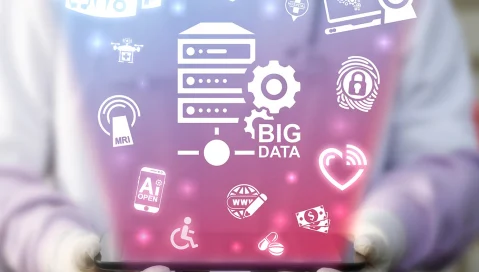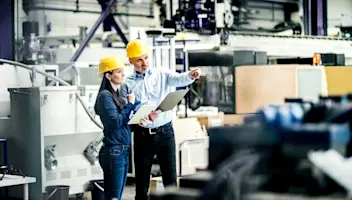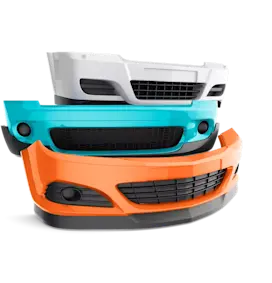Big Data and You: Understanding the Basics of Industry 4.0
Big Data and You: Understanding the Basics of Industry 4.0
Big Data and You: Understanding the Basics of Industry 4.0
8 Aug 2018
Aptean Staff Writer
It’s not an exaggeration to say that the introduction of technology like automation, cloud computing, and augmented reality in factory management will impact processes for decades to come. The current rate of manufacturing innovation is unprecedented, to the point that many have labeled this era the Fourth Industrial Revolution – or Industry 4.0.
If Industry 4.0 technologies have yet to arrive on your shop floor, they soon will, driven by rising demands on factory resources. For factory managers raised on manual processes, this shift might seem negatively disruptive – managers are cautiously optimistic, but also somewhat adverse to mastering new processes, and perhaps a little panicked about how these changes will affect their staff.
For those factories beginning to leverage Industry 4.0, the terms and concepts regularly tossed around by experts can seem abstract. Don’t let that dissuade you from experimenting with new solutions. The first step in successfully implementing Industry 4.0 technologies is understanding what they are and how they can be utilized.
Let’s start with the basics: defining three pairs of critical Industry 4.0 terms that are often confused: (1) IoT & IIoT; (2) Data Mining and Predictive Analytics; and (3) Artificial Intelligence & Machine Learning.
The IoT and the IIoT
The IoT, or the Internet of Things, is all around you – in fact, you probably have two or three IoT-enabled devices sitting on your desk now. The IoT is a system of interrelated computers, machines, and objects that are provided with unique identifiers and the ability to transfer data over a network without requiring human-to-human or human-to-computer interaction. Simply put, any object you own that uploads data to the Internet, whether you direct it to or not, is part of the IoT.
When the IoT is discussed in terms of its impact on the manufacturing industry, as well as the specific technologies at use in factories, it is typically referred to as the Industrial Internet of Things (IIoT). The IIoT connects devices that allow machines to communicate across a network, with the goal of monitoring and improving production – for instance, preventing unnecessary machine downtime. Typically, the IIoT takes the form of sensors attached to critical machines in the factory; these sensors use the Internet to feed management data about machine performance.
Data Mining and Predictive Analytics
Think about all the tasks you accomplish on your phone, and all the data the IoT picks up from your usage. It’s an enormous amount of information that needs to be translated into actionable insights. This process is known as data mining – sorting through IoT-collected information and pulling out key takeaways that help improve operations. In the factory, IoT-enabled devices record data from machinery and provide it to management. Typically, a manufacturing execution system (MES) will help you pare down your data to a reasonable level, getting to the important information quicker.
Insights gleaned from data mining ultimately power predictive analytics. Advanced MES solutions can recognize an abnormality in the data, register it as a pattern that leads to a specific outcome, and alert the manufacturing team of a potential disturbance. If, for instance, you notice that a series of vibrations on a conveyer belt occurs, without fail, four days before complete malfunction, you’ll understand that encountering said pattern means it’s time to replace the belt. Using MES technology, factories gain the data needed to implement a proactive maintenance strategy and avoid downtime. With efficiency expectations high and customer demand even higher, it’s never been more important for managers to master and use predictive analytics.
Artificial Intelligence and Machine Learning
Artificial intelligence, or AI, isn’t just for science-fiction movies anymore. We see it at work every day – whether we’re ordering groceries through Alexa or asking Siri for directions. AI describes computer systems capable of performing tasks that normally require human intelligence, such as visual perception, speech recognition, decision-making, and translation. In the factory, AI-enabled sensors are able to “think” for themselves, based on human programming, to measure machine vibrations and alert management when something isn’t right. These sensors allow maintenance teams to catch malfunctioning equipment weeks before it affects productivity.
Machine learning is an important component of artificial intelligence: it describes how the AI device acclimates to its environment. As children, we learn by trial and error – for instance, the first time we touch a hot stove and burn a finger, we associate the act with an unpleasant sensation and understand why we must not do it again. Similarly, machines learn by first being programmed to recognize normal, then reprogrammed each time they encounter a different scenario. AI-enabled devices internalize these experiences so that they recognize when a machine is acting abnormally.
Eventually, AI tech will not only be able to recognize malfunctions, but also learn what needs to be done (i.e., ordering a new part) to fix it and resolve the issue without human assistance.
Putting the Terms to Use
Now that you have a better picture of what these technologies are, it’s time to consider how to put them to use in your factory. In the coming weeks, we’ll continue our “Big Data and You” blog series with posts on why Industry 4.0 technology is crucial and how best to implement it.
At Aptean, we’re excited about tomorrow’s factory and passionate in helping our customers master it. With a grasp of best practices and the software to drive your operations, you’ll be prepared to go wherever Industry 4.0 leads. Reach out today to contact us and learn more.
Related Content





Start transforming your business today
If you’re ready to take your discrete and industrial manufacturing business to the next level, we’d love to help.



